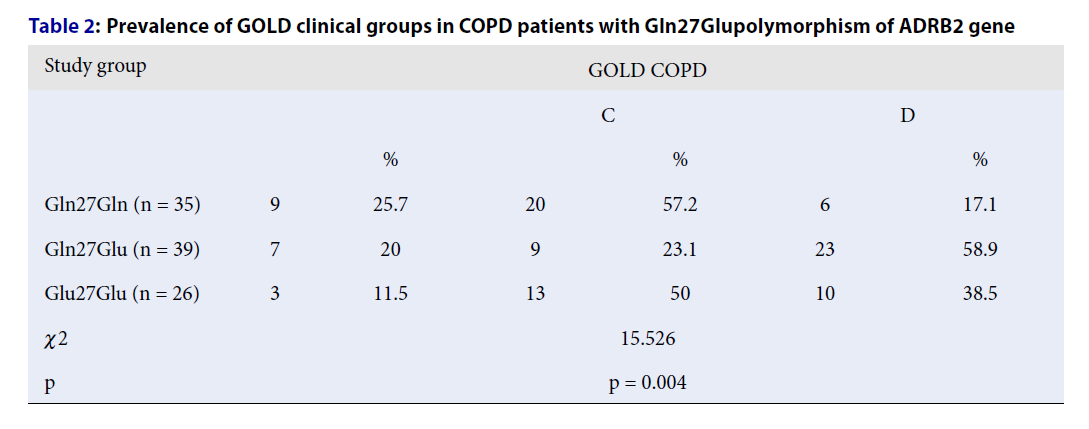Does the Gln27Gln polymorphism of the adrenoreceptor beta 2 gene affect the clinical course of chronic obstructive pulmonary disease?
DOI:
https://doi.org/10.15419/bmrat.v9i5.738Keywords:
ADRB2 gene, antibiotics, COPD, corticosteroids, exacerbationsAbstract
Introduction: Many recent guidelines have highlighted the importance of genetic factors in chronic obstructive pulmonary disease (COPD) development. Adrenoreceptor beta 2 (ADRB2) is believed to be linked to the response to beta 2 agonists. However, the data for this gene remains controversial. In our study we aimed to investigate the impact of the Gln27Glu gene polymorphism of ADRB2 on the clinical course of COPD.
Methods: 100 patients were included into the study. We assessed GOLD group, number of exacerbations, hospitalizations, modified Medical Research Council (mMRC) dyspnea and COPD assessment test (CAT) scores, and the utilization of antibiotics, glucocorticoids, and xanthines in these patients, as well as genetic testing at inclusion. All patients had their medication changed to tiotropium/olodaterol.
Results: Groups did not differ according to age, sex, smoking status, pack-years, or COPD duration. We found that patients with the Gln27Gln polymorphism had the lowest GOLD grading, D. No difference was found in the number of exacerbations, hospitalizations, and out-patient exacerbations in the year prior to inclusion and the study year. Tiotropium/olodaterol were comparable in all study groups in reducing exacerbations and hospitalizations. There was no significant difference in mMRC and CAT values between the groups. We found that Gln27Gln patients required less antibiotics at inclusion and less glucocorticoids at the end of the study. Tiotrpium/olodaterol showed variable results for different genotypes regarding the reduction in use of different drugs.
Conclusion: This ADRB2 polymorphism was associated with the progression of COPD as it is linked to a more severe phenotype, requiring greater use of antibiotics and glucocorticoids. This indicates potential crosstalk at the cellular level between ADRB2 and glucocorticoid receptors and should be investigated further.

Published
Issue
Section
License
Copyright The Author(s) 2017. This article is published with open access by BioMedPress. This article is distributed under the terms of the Creative Commons Attribution License (CC-BY 4.0) which permits any use, distribution, and reproduction in any medium, provided the original author(s) and the source are credited.
